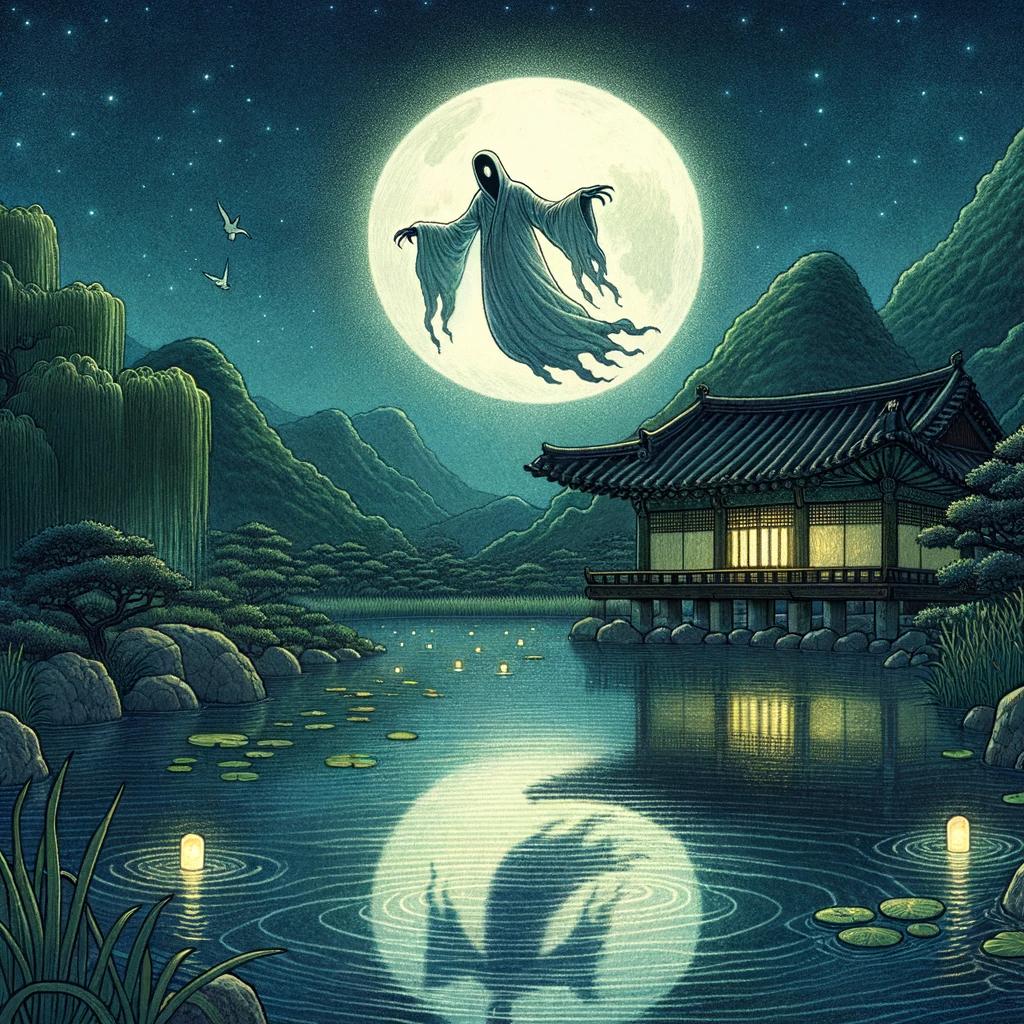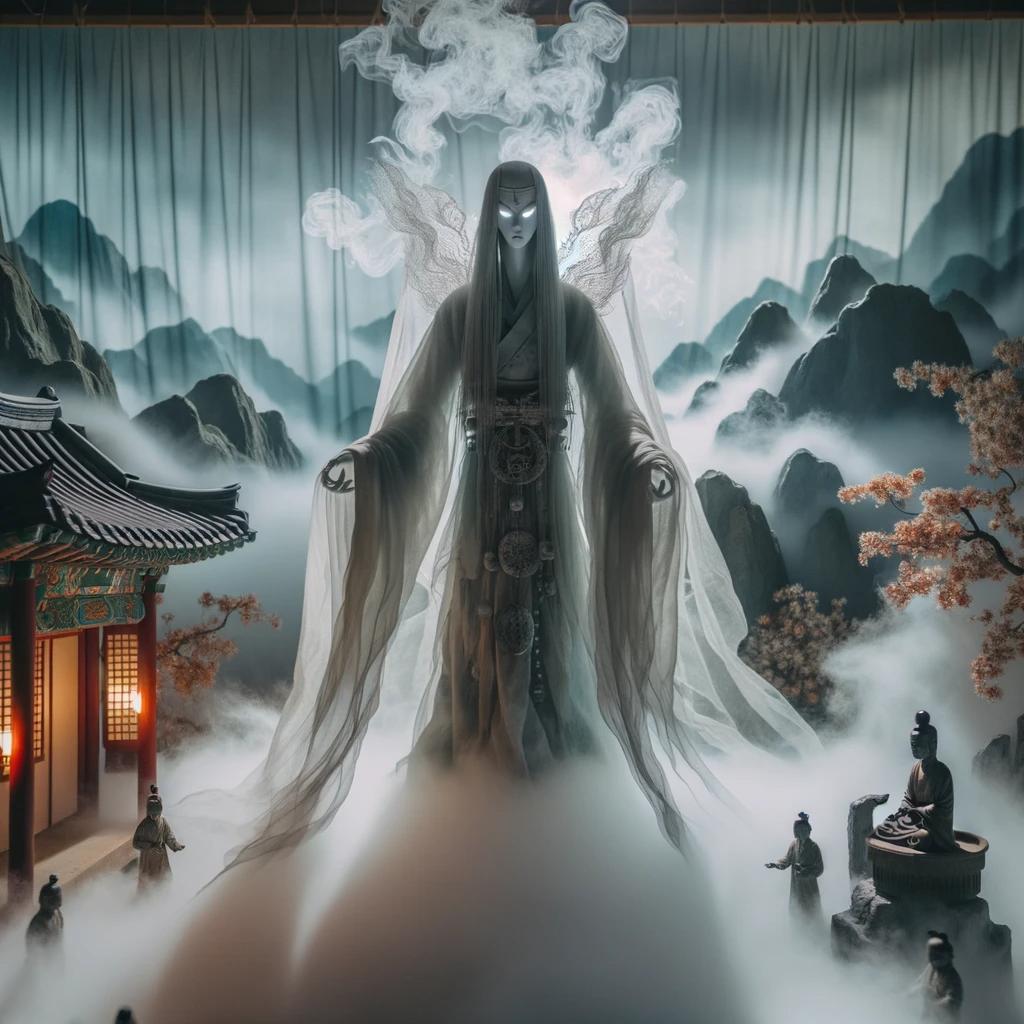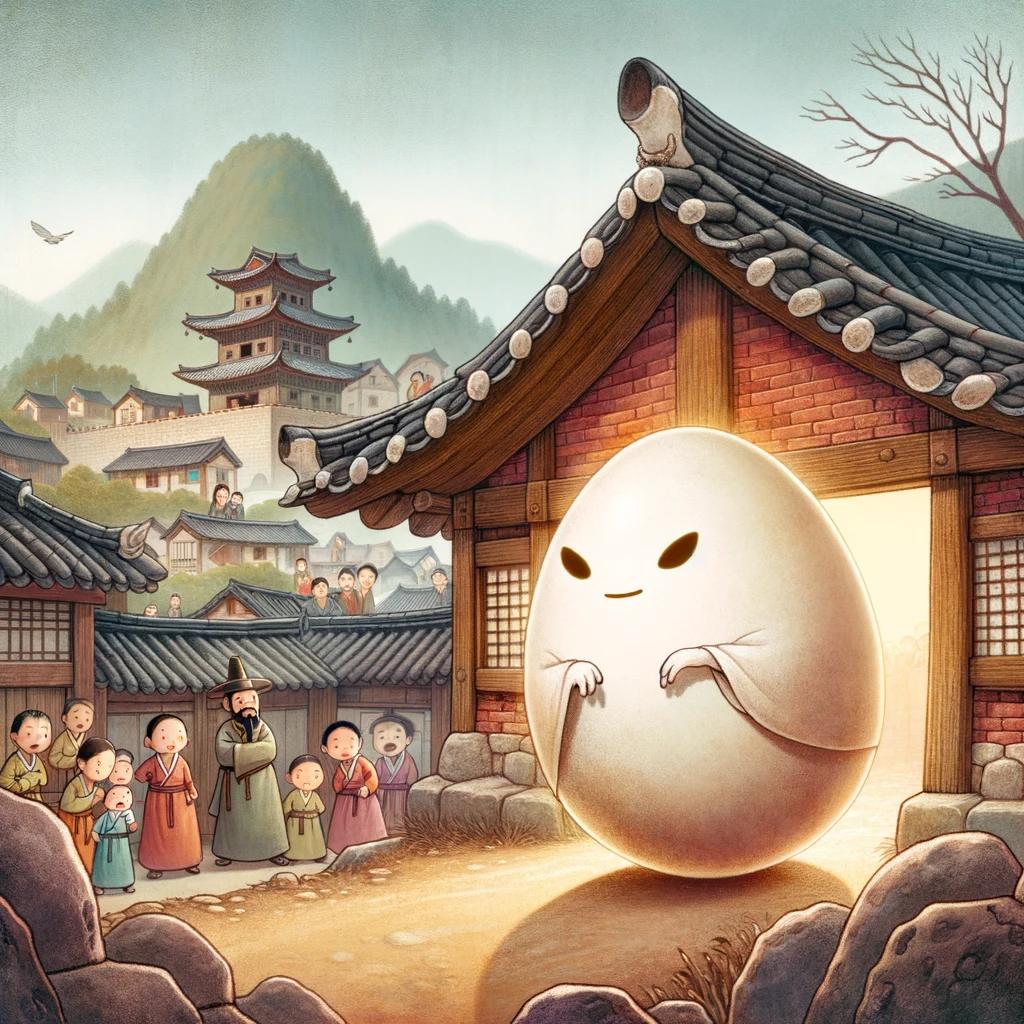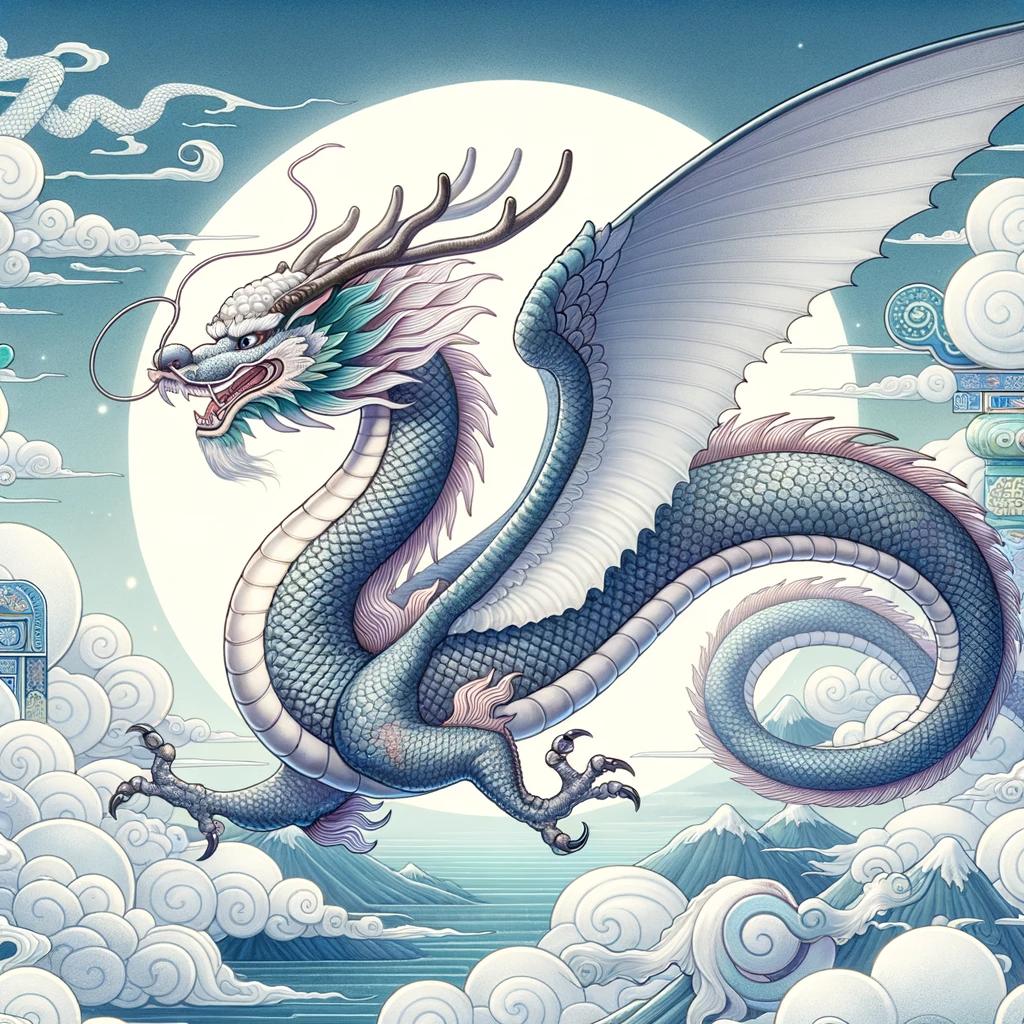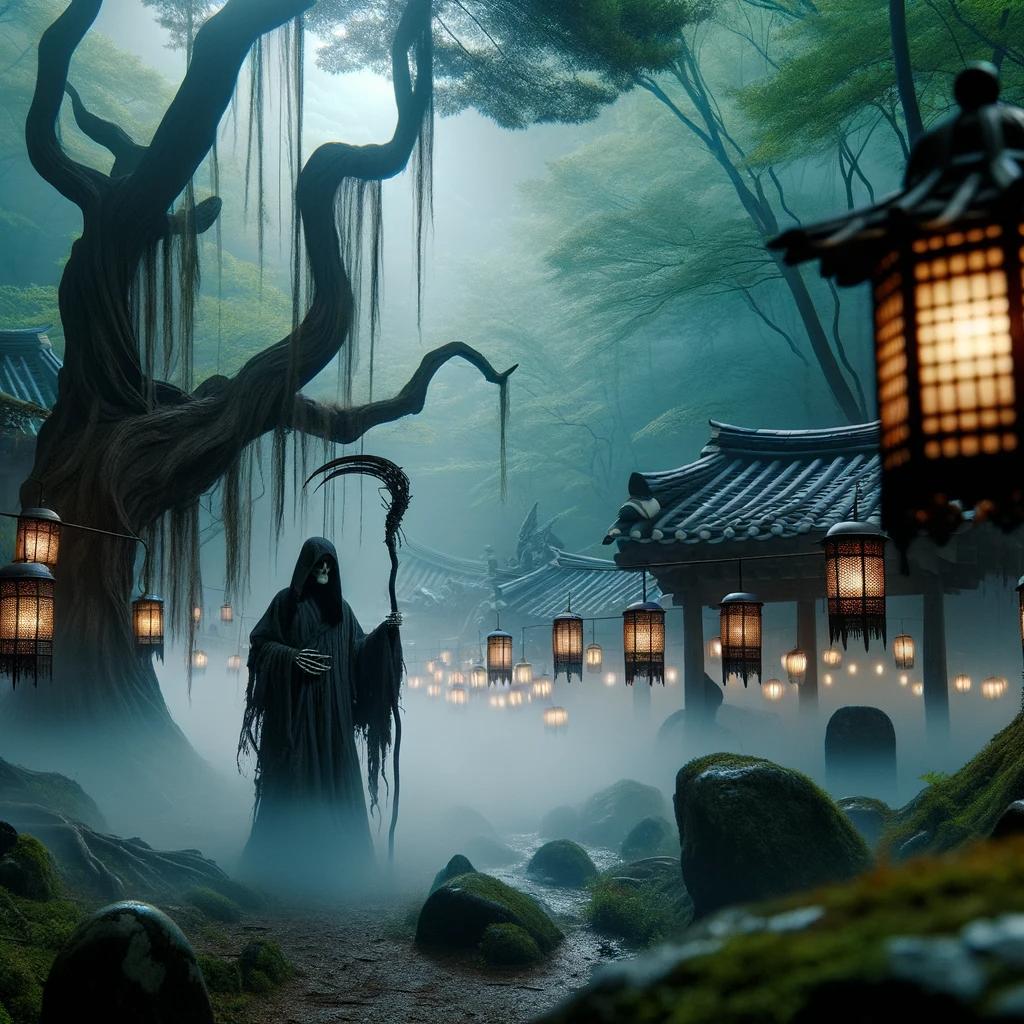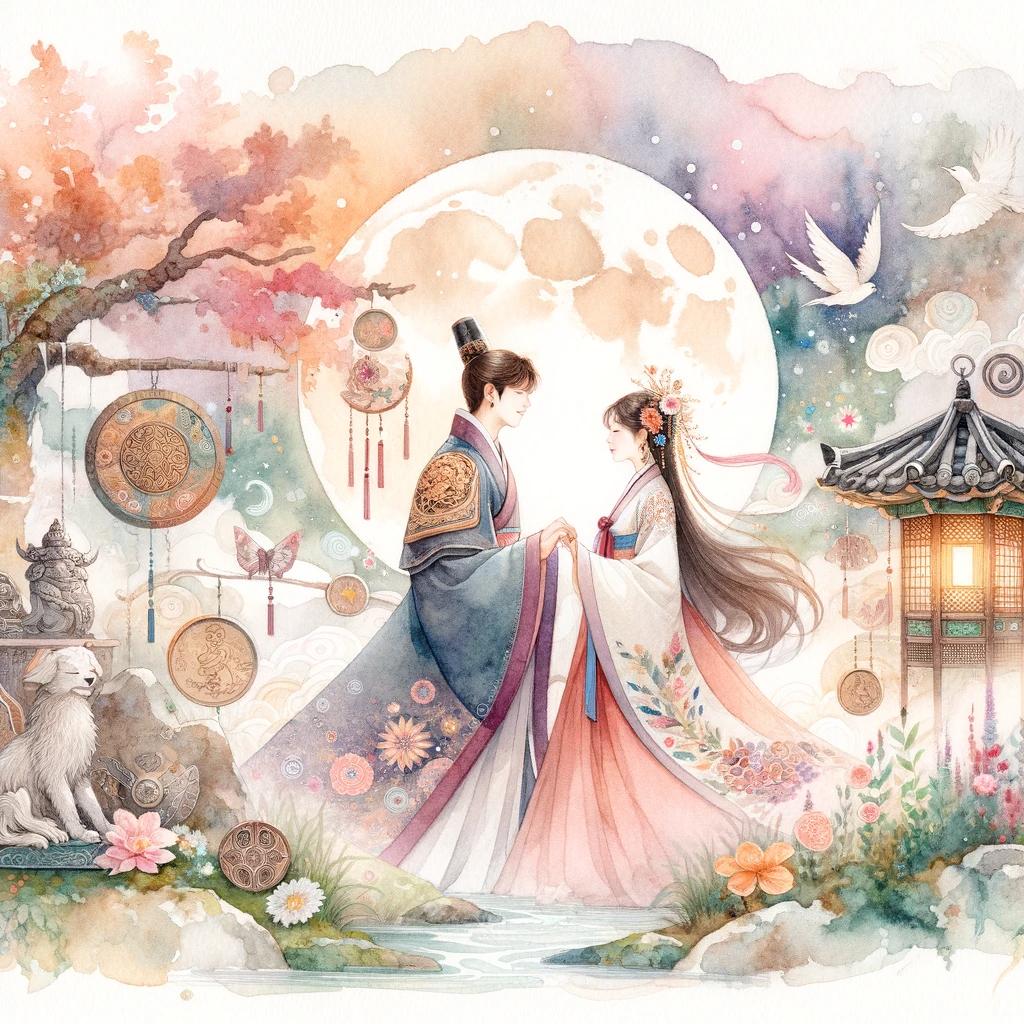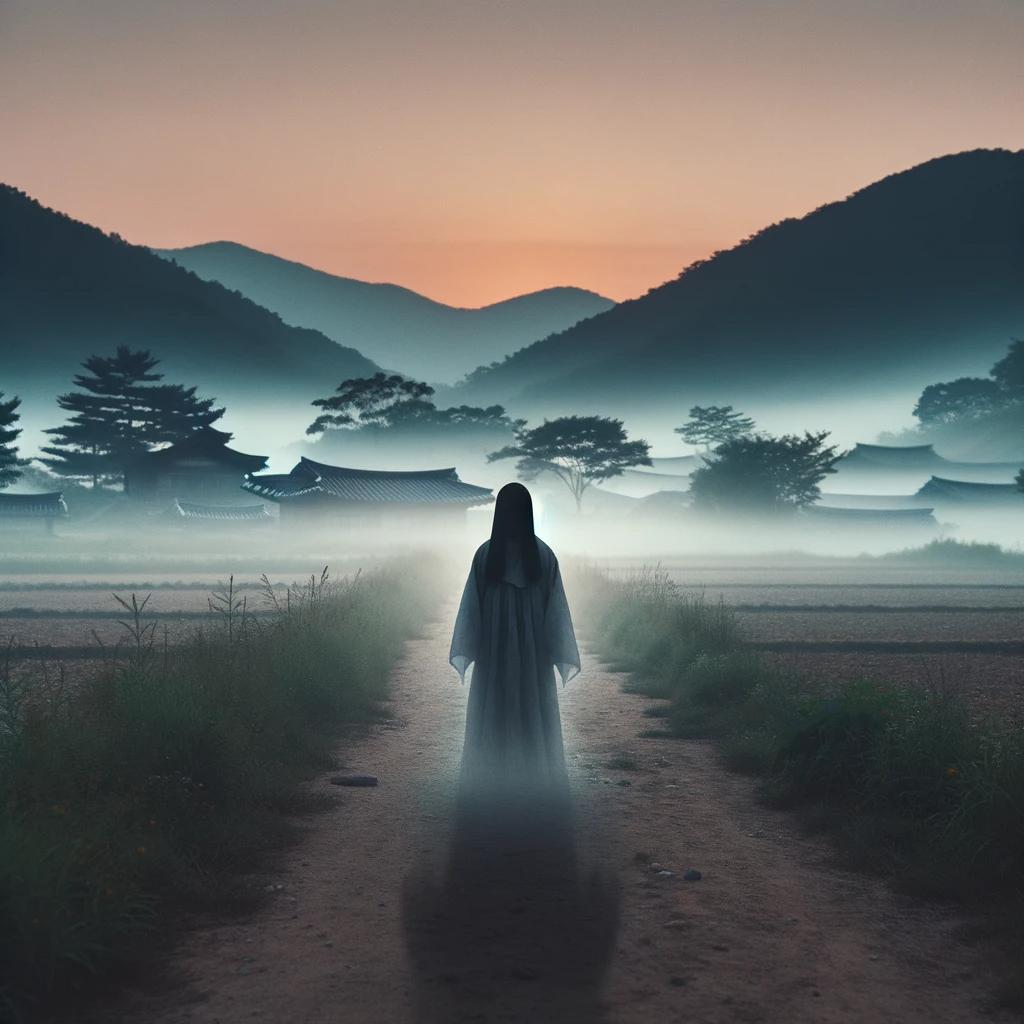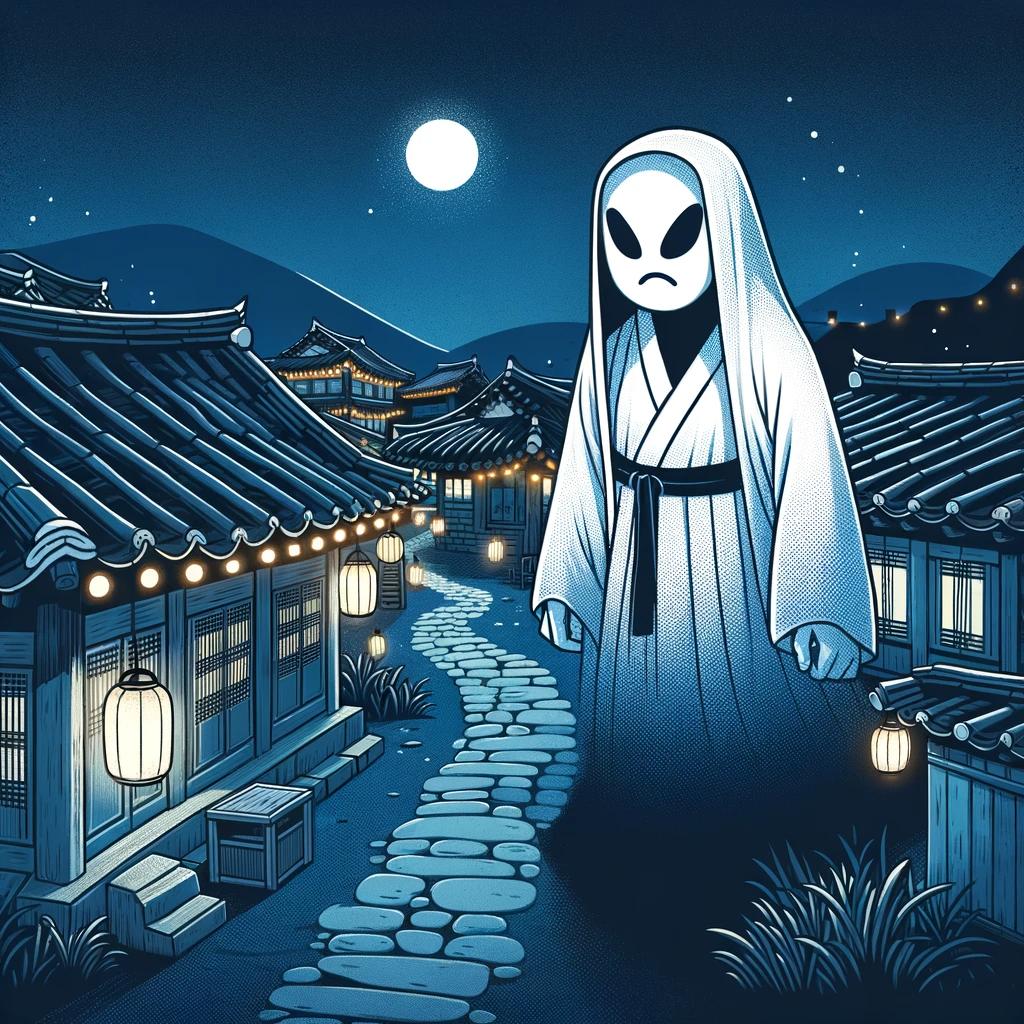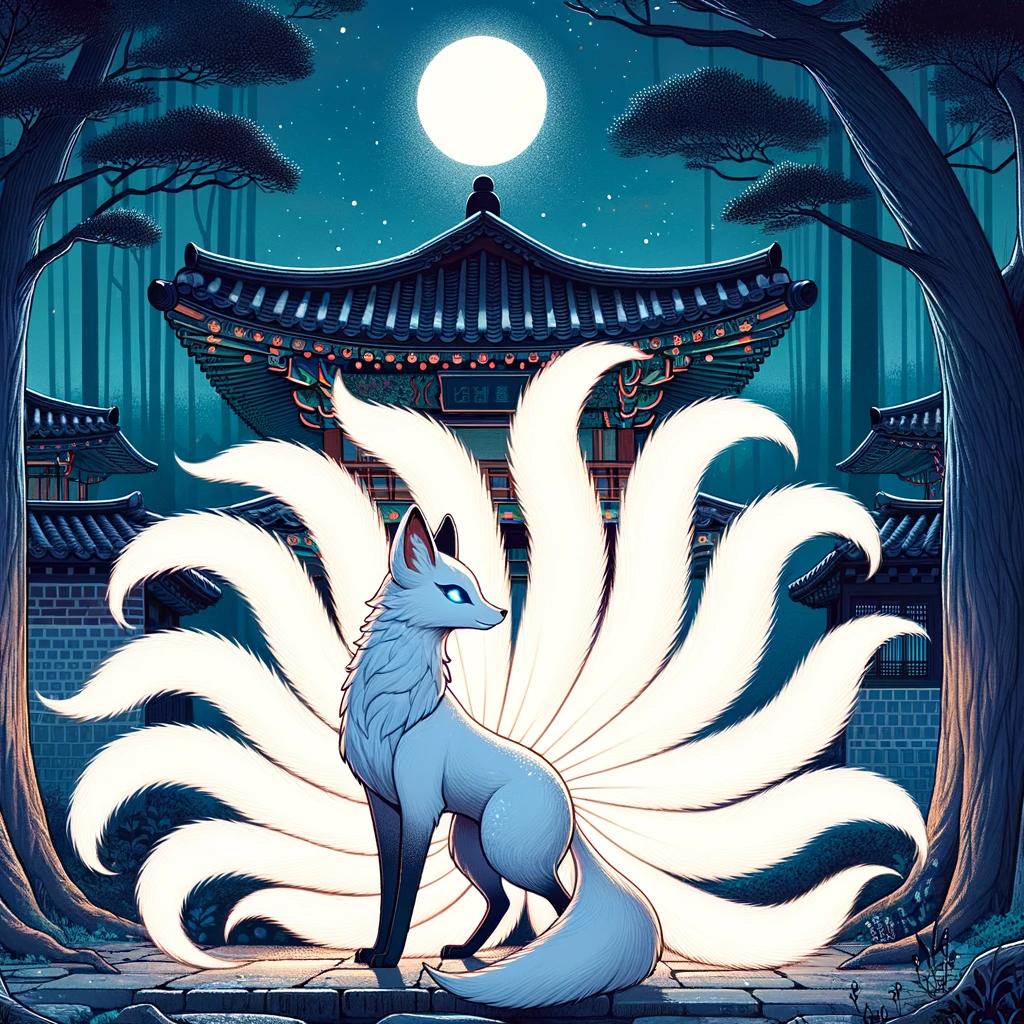Mul Gwishin: Exploring the Supernatural Creatures of Korean Folklore
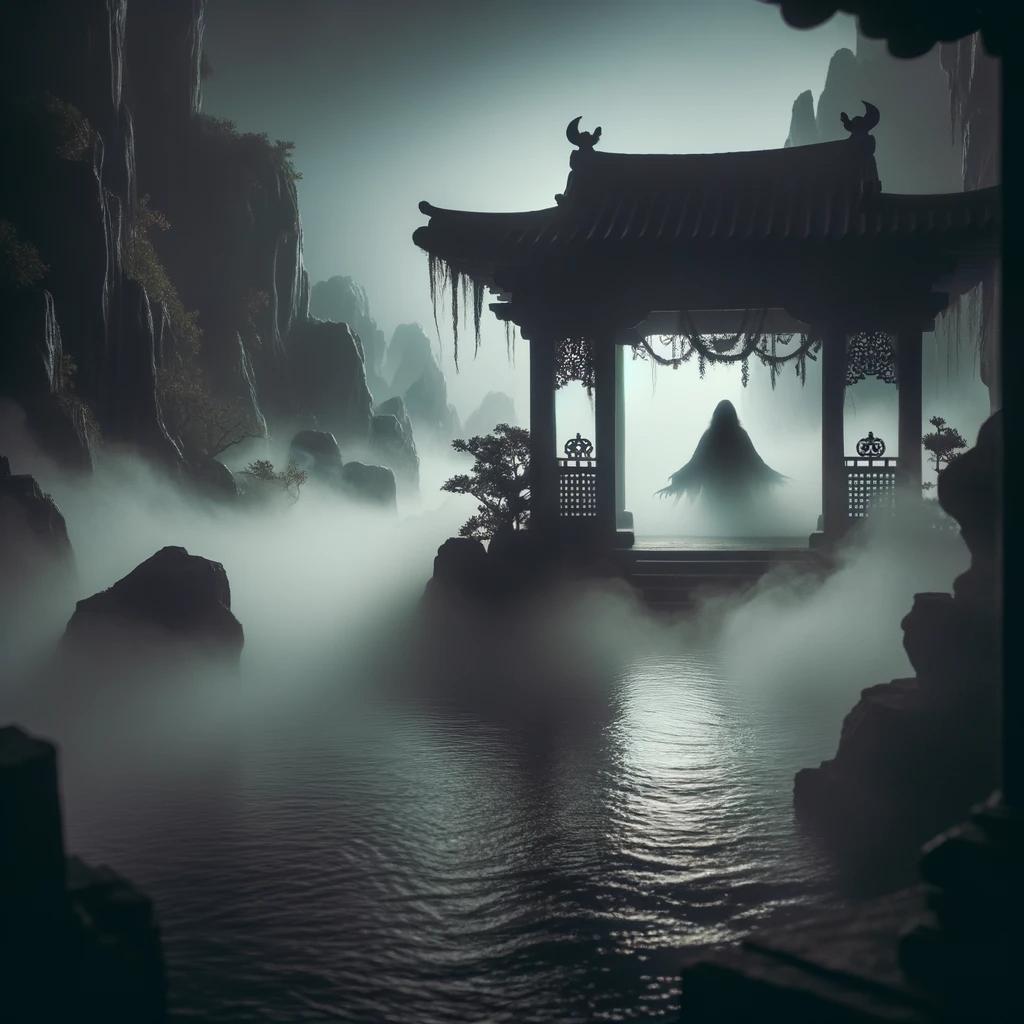
Mul Gwishin, a prominent aspect of Korean folklore, encompasses a variety of supernatural spirits and creatures. These entities, known as Gwishin, are restless beings who wander the earth, unable to fulfill their life’s purpose.
Among them are Cheonyeo Gwishin, the ghostly spirits of virginal girls serving their families, and Chonggak Gwishin and Mongdal Gwishin, other spirits intertwined with Korean folklore. Additionally, mythical beings like Dokkaebi, mischievous spirits, and Gumiho, nine-tailed foxes, are prevalent.
Korean cinema, including films like “My Girlfriend is a Gumiho” and horror movies like “Whispering Corridors,” showcases these supernatural creatures. The global interest in Mul Gwishin continues to thrive, sparking discussions and fascination worldwide.
Understanding Korean Folklore
Exploring the rich cultural heritage of Korea entails delving into its fascinating folklore, which is deeply ingrained in the traditions, beliefs, and history of the nation. This section provides insights into the significance of folklore in Korean society, as well as a brief overview of its culture and history.
Brief Overview of Korean Culture and History
Korea boasts a vibrant and ancient culture that dates back thousands of years. Its unique blend of traditions, customs, and artistic expressions reflects the nation’s rich history and influences from neighboring countries.
From the dynamic martial art of Taekwondo to the graceful beauty of hanbok, Korea’s traditional clothing, the culture is a tapestry of diverse elements. This section sheds light on the key aspects of Korean culture, offering a glimpse into the backdrop against which its folklore thrives.
Significance of Folklore in Korean Society
Folklore holds a deep-rooted place in Korean society, acting as a bridge between the past and the present. It serves as a means of preserving and passing down the collective wisdom, values, and experiences of generations.
Korean folklore is not merely a collection of mythical tales; it is a reflection of the social fabric, moral codes, and spiritual beliefs that have shaped the Korean people’s lives. This section explores how folklore plays a pivotal role in shaping Korean identity, fostering a connection with the ancestral past, and providing valuable insights into the societal values and norms.
Exploring Mul Gwishin: Korean Ghosts
The world of Mul Gwishin takes us into the realm of Korean ghosts, offering an intriguing glimpse into their origins and beliefs. These supernatural beings hold deep significance in Korean folklore and continue to captivate both locals and international audiences alike.
Origins and Beliefs Surrounding Mul Gwishin
Mul Gwishin are believed to be spirits of individuals who have not fulfilled their purpose in life and are condemned to roam the earth. Rooted in ancient beliefs and customs, the origins of Mul Gwishin can be traced back to traditional Korean practices of ancestor worship and ancestral veneration.
It is said that these restless spirits can be appeased through rituals, offering them comfort and guiding them towards finding peace.
Different Types of Mul Gwishin
Within the realm of Mul Gwishin, various types of spirits exist, each with its unique characteristics. Among them, we find the Cheonyeo Gwishin, known as the virgin ghosts, who were unable to fulfill their duties towards their fathers, husbands, and children.
These ethereal beings serve as a poignant representation of unrealized aspirations and unfulfilled responsibilities.
- Cheonyeo Gwishin – The Virgin Ghosts
- Chonggak Gwishin – The Water Ghosts
- Mongdal Gwishin – The Egg-Shaped Ghosts
The Chonggak Gwishin are water spirits tied to aquatic locations, often appearing near rivers or lakes.
Legends surround their ability to manipulate water and their connection to drowning accidents. On the other hand, the Mongdal Gwishin are known for their unique appearance reminiscent of an egg shape.
Stories depict these ghosts as enigmatic and formidable entities, with their egg-like form symbolizing hidden mysteries and the cycle of life.
Mythical Beings in Korean Folklore
In Korean folklore, there are various mythical beings that play significant roles in shaping the narratives and beliefs of the culture. Let’s explore two prominent figures: Dokkaebi and Gumiho.
Dokkaebi: Mischievous Spirits
Dokkaebi are mischievous and playful spirits often depicted as goblins or tricksters.
These supernatural beings possess extraordinary powers and are known for their pranks and riddles. According to Korean legends, Dokkaebi are known to reward the righteous and punish the dishonest, adding a moral element to their mischievous nature.
Gumiho: Nine-Tailed Foxes
Gumiho, also known as nine-tailed foxes, hold a prominent place in Korean folklore. These mystical creatures are believed to be foxes that have lived for a thousand years, gaining the ability to shape-shift and sometimes appearing in the form of beautiful young women.
However, Gumiho are often portrayed as sinister beings that prey on human hearts, symbolizing seduction and danger.
Both Dokkaebi and Gumiho have captured the imaginations of people and have become popular characters in Korean literature, art, and entertainment.
Portrayal of Mul Gwishin and Korean Folklore in Media
In popular media, Mul Gwishin and Korean folklore have been captivating audiences around the world. Let’s explore how these supernatural beings and mythical tales have made their way into movies and influenced the Korean horror genre.
Korean Folklore in Movies
Korean cinema has embraced the rich tapestry of Mul Gwishin and Korean folklore, bringing these captivating stories to life on the silver screen. One notable film is ‘My Girlfriend is a Gumiho,’ which portrays a Gumiho, a shape-shifting nine-tailed fox, trying to navigate a successful relationship to become human.
‘Whispering Corridors’ is another outstanding example, albeit leaning towards horror. The movie explores the haunting presence of Gwishin, tormenting students within a school setting, creating spine-tingling moments.
Influence of Mul Gwishin on Korean Horror Genre
Mul Gwishin creatures have had a significant impact on the Korean horror genre.
Their powerful presence and eerie nature have become integral elements in creating terrifying and suspenseful narratives that captivate viewers. These supernatural entities, such as Cheonyeo Gwishin, Chonggak Gwishin, and Mongdal Gwishin, add depth and a chilling atmosphere to horror films in Korea.
The portrayal and interpretation of Mul Gwishin in Korean media have helped shape the perception and understanding of these mythical beings both within Korea and across the globe.
Mul Gwishin in Korean Mythology and Beliefs
The existence of Mul Gwishin in Korean mythology plays a significant role in shaping the cultural beliefs and symbolism associated with these supernatural entities.
This section delves into the cultural significance and the symbolism attached to Mul Gwishin, as well as the traditional practices and rituals related to these spirits.
Cultural Significance and Symbolism of Mul Gwishin
Mul Gwishin hold a special place in Korean culture and are often viewed as a reflection of unfulfilled desires, unresolved emotions, and unfinished business.
They symbolize the lingering presence of the departed and are believed to exist due to a lack of closure in their previous lives. Through the lens of Mul Gwishin, Korean folklore explores themes of identity, family, and duty, highlighting the importance of fulfilling one’s purpose in life.
The presence of Mul Gwishin also serves as a reminder of the connection between the living and the dead. They emphasize the continuation of familial bonds beyond death and the belief in ancestral spirits.
Mul Gwishin are often depicted as harboring both positive and negative energies, representing the complex nature of human existence. They embody the eternal struggle between good and evil, light and darkness, and justice and revenge in Korean folklore.
Traditional Practices and Rituals Associated with Mul Gwishin
Korean traditions and rituals surrounding Mul Gwishin are deeply rooted in the belief of honoring and appeasing the spirits. These practices aim to bring peace to the restless souls and ensure their proper transition to the afterlife.
Some common rituals include ancestral rites, wherein offerings and prayers are made to the deceased ancestors, seeking their blessings and protection.
Jesa, a ceremonial rite performed during specific dates throughout the year, is another important practice associated with Mul Gwishin.
Family members gather to pay respects to their ancestors, offering food, drinks, and other offerings to express gratitude and maintain a harmonious relationship with the spirits. These rituals serve as a form of communication with the Mul Gwishin, seeking their guidance and protection for the living.
In addition to ancestral rites, shamanic rituals also play a significant role in connecting with Mul Gwishin. Shamans, known as “mudang” in Korean culture, act as intermediaries between the human world and the spirit realm.
Through chants, prayers, and ceremonies, they communicate with the Mul Gwishin, seeking resolutions for the unresolved issues that bind these spirits to the earthly realm.
Ultimately, these traditional practices and rituals not only honor the Mul Gwishin but also reinforce the cultural values and beliefs deeply ingrained in Korean society, highlighting the profound connection between the living and the spirits of the deceased.
Global Impact and Interest in Mul Gwishin
Mul Gwishin, with its intriguing supernatural creatures and captivating stories, has gained significant popularity not only in Korea but also globally.
Its unique and mystifying elements have captured the attention of people from various cultures and backgrounds. Let’s explore the global impact and interest that Mul Gwishin has garnered in recent years.
Mul Gwishin in International Pop Culture
The influence of Mul Gwishin can be observed in international pop culture, particularly in the entertainment industry. Korean movies and dramas featuring Mul Gwishin, such as ‘My Girlfriend is a Gumiho’ and ‘Whispering Corridors,’ have gained international recognition and have been well-received by audiences worldwide.
These captivating portrayals have expanded the exposure of Mul Gwishin to a global audience and generated curiosity and interest in Korean folklore.
Online Communities and Discussions about Mul Gwishin
The rise of online platforms and social media channels has allowed fans and enthusiasts of Mul Gwishin to come together and engage in discussions about these supernatural creatures. Online communities, forums, and dedicated fan pages provide a space for individuals to express their fascination, share theories, and exchange knowledge about Mul Gwishin and its various legends and myths.
This online presence has contributed to the growing interest and exploration of Mul Gwishin beyond the boundaries of Korea.
Exploring the Symbolism and Cultural Significance
Additionally, the global interest in Mul Gwishin stems from the rich symbolism and cultural significance associated with these supernatural beings. Many individuals find fascination in understanding the deeper meaning behind Mul Gwishin and how they reflect certain aspects of Korean culture, beliefs, and values.
This has sparked academic research, cultural studies, and artistic interpretations, further enhancing the global interest and appreciation for Mul Gwishin.
As we delve deeper into the interconnectedness of cultures and the power of storytelling, it becomes evident that Mul Gwishin holds a special place in the hearts and minds of people worldwide.
The fascination with these supernatural creatures continues to grow, urging individuals to explore the depths of Korean folklore and uncover the enchanting world of Mul Gwishin.

